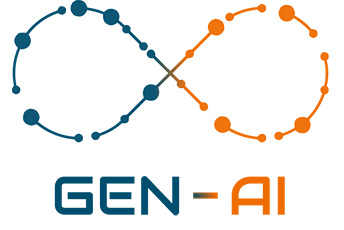Automotive Sector (Repair Shops, Vehicle Dealerships, Automotive Parts Suppliers)
Scenario:
In the automotive sector, repair shops, vehicle dealerships, and automotive parts suppliers handle a large number of images of repair forms, technical specifications, and parts labels. Extracting relevant information from these documents is crucial for improving efficiency in managing repairs, parts orders, and vehicle maintenance. A multimodal chatbot combined with a semantic extractor based on OCR + Computer Vision + LLM can automate the extraction of text and technical data, enhancing accuracy and speed in managing these processes.
How Integration Works in the Automotive Sector
- Multimodal Interaction with the Chatbot:
– Mechanics, dealership operators, and automotive parts suppliers can interact with the multimodal chatbot in several ways:
– Text: Requesting information extraction from repair forms or technical specifications of vehicles.
– Images: Uploading images of repair forms, parts labels, or technical specifications to automatically extract text and relevant details.
– Audio: Making verbal inquiries about the status of repairs, necessary parts, or technical specifications to receive quick and accurate responses.
- Text Extraction from Images of Forms and Technical Specifications:
– OCR: The chatbot uses OCR to extract text from images of repair forms, technical specifications of vehicles, and automotive parts labels, facilitating the digitization of paper documents.
– Computer Vision: Analyzes images to identify key fields in forms, such as the vehicle name, chassis number, repair details, and technical specifications. It also recognizes automotive parts labels, capturing information like part numbers, manufacturers, and product features.
– LLM (Large Language Model): Once the text is extracted, the LLM organizes and structures the information, generating detailed summaries and verifying technical specifications. This facilitates its use in managing inventories, repair orders, and parts requests.
- Automation of the Repair Management and Parts Ordering Process:
– Information Extraction from Repair Forms: The system automatically extracts key information from forms, such as vehicle details (make, model, year), necessary repairs, and involved components, allowing workshops to organize and manage repairs more efficiently.
– Analysis of Technical Specifications of Vehicles: Dealerships and workshops can extract technical specifications of vehicles (engine capacity, fuel type, dimensions, etc.) directly from documents, facilitating more accurate diagnostics and repairs.
– Automotive Parts Labels: The chatbot can process images of labels, extracting details such as part number, manufacturer, and technical characteristics, allowing suppliers and workshops to organize orders and manage inventories more accurately.
- Real-Time Response and Automatic Management:
– Text: The chatbot provides quick and detailed responses about the data extracted from forms, specifications, and labels, answering questions like “What parts are needed for this repair?” or “What are the specifications of this vehicle’s engine?”
– Images: For images of forms or labels, the system visually highlights key fields or important parts, facilitating the review and validation of the extracted information.
– Audio: Operators can make verbal inquiries about repairs or parts, such as “What are the technical specifications of this engine?” or “What parts are missing from this order?” receiving real-time responses based on the extracted data.
Advantages of Integration in the Automotive Sector
- Automation of Technical Document and Form Processing:
– Workshops and dealerships can automatically digitize repair forms and technical specifications, eliminating the need for manual data entry. This speeds up the repair and parts ordering management process, optimizing workflow.
- Increased Accuracy in Inventory Management and Orders:
– The system ensures precise extraction of data from automotive parts labels, ensuring that part numbers, manufacturers, and technical characteristics are correctly entered into inventory or order systems, minimizing errors and delays in parts supply.
- Improved Efficiency in Repair Shops:
– Workshops can organize repairs more efficiently by automatically extracting key information from repair forms, allowing for faster task assignment and vehicle repair management.
- Reduction of Human Errors in Technical Data Handling:
– By automating the extraction of text from technical specifications and forms, human errors in data entry are reduced, ensuring that information about vehicles and repairs is accurate and complete.
- Scalability for Workshops and Dealerships with High Document Volumes:
– This system is highly scalable, allowing repair shops and dealerships of any size to handle large volumes of documents and forms seamlessly, automating their processing and management.
- Integration with Workshop Management Systems (DMS):
– The extracted information can be directly integrated into dealership management systems (DMS) or inventory systems, facilitating the management of repairs, orders, and stock without the need for additional manual processes.
Example of Workflow in a Multimodal Chatbot for the Automotive Sector
– Case 1: A mechanic uploads an image of a vehicle repair form.
– Chatbot: “What information do you want to extract from the form?”
– Mechanic: “Extract the vehicle details and necessary repairs.”
– Chatbot Response: “Vehicle: Ford Focus 2018. Necessary repairs: oil change, brake check, battery replacement.”
– Case 2: A supplier uploads an image of an automotive parts label.
– Chatbot: “Processing the parts label…”
– Chatbot Response: “Part number: 12345ABC. Manufacturer: Bosch. Description: Brake pads for SUV vehicles, compatible with models from 2015 to 2020.”
– Case 3: A dealership manager makes a verbal inquiry about the technical specifications of a vehicle.
– Chatbot: “What technical specifications do you need?”
– Manager: “What is the engine capacity of the 2020 Toyota Corolla?”
– Chatbot Response: “Engine capacity: 1.8 liters, 4 cylinders, 139 horsepower.”
This integration of a multimodal chatbot with a semantic extractor based on OCR + Computer Vision + LLM in the automotive sector allows for the automation of technical information and form extraction, improving accuracy and efficiency in managing repairs, parts orders, and inventory administration, benefiting repair shops, dealerships, and parts suppliers alike.


